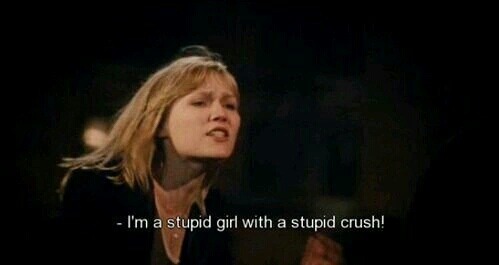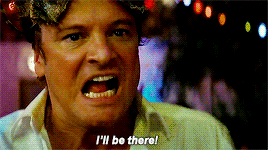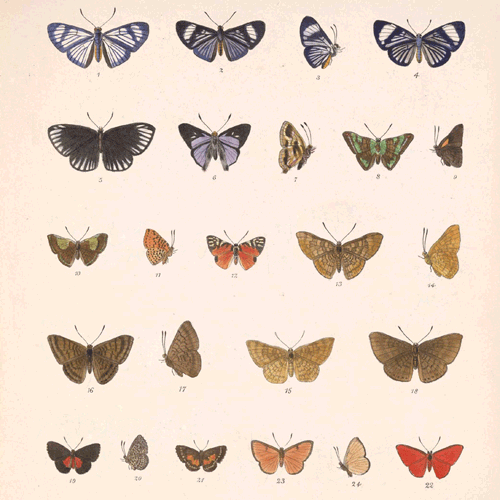Did Anyone Else Get A Weird Thrill As A Kid From Correctly Imitating Normal Kid Things
did anyone else get a weird thrill as a kid from correctly imitating Normal Kid Things
like I would drink a Coca Cola (hating every sensory moment) and feel excited about participating in a Normal activity. I listened to 20 second samples of Avril Lavigne songs at Barnes and Noble and think, “oh yes, this is what normal American children do, look at me, I’m doing it too”
More Posts from Mightiest-anathema and Others

Teodoro Wolf Ferrari aka Teodoro Wolf-Ferrari (Italian, 1876-1945, b. Venice, Italy) - Danza Macabra (Dance Macabre), 1908, Paintings: Oil on pressed Cardboard
They’re just enjoying themselves and I’m all here for it. 😊
About Synesthesia
For anybody who wants to know more or who has just started learning!
What is synesthesia?
Synesthesia is a condition in which stimulation of one sense activates a response in another sense. In simpler terms, it basically means that two or more senses can be connected, leading a synesthete (person with synesthesia) to associate senses that others probably don't associate!
As an example: my synesthesia connects my sense of hearing to my sense of sight. Whenever I listen to music, I associate colors and images with the sounds I'm hearing.
Estimates on how much of the population has synesthesia varies - as few as 1% or as many as 10% of the global population could have synesthesia. We just don't know.
What kinds of synesthesia are there?
Here are some (but certainly not all) types of synesthesia.
Grapheme-Color Synesthesia: individuals with this type of synesthesia associate colors (and sometimes textures!) with written symbols, such as letters and numbers. A lot of grapheme-color synesthetes, for example, associate the letters of the Roman alphabet with different colors! (Note that such synesthetes can also associate the same colors with different letters/numbers/symbols. It varies wildly from person to person!)
Chromesthesia: this type of synesthete associates sounds with colors and/or images (or abstract visualizations). Some chromesthetes may see colors when they listen to music, and the colors depend on the varying aspects of the music they listen to. Some see moving images or patterns when listening to music as well. Still others may associate colors and/or images when hearing everyday sounds, such as people's voices or the creaking of a staircase! This type of synesthesia can often result in hearing sensitivity for those who have it - Misophonia is thought to potentially be connected to synesthesia.
Spatial-Sequence Synesthesia: this type of synesthesia affects how people see certain sequences, such sequences being numbers, the alphabet, the months of the year, the days of the week, a timeline, etcetera. Spatial sequence synesthetes see or imagine these sequences in the physical space surrounding them; as an example, one might see the months of the year as a spiral that surrounds their body, or physically picture the number line when doing math (this specifically is also known as Number Form Synesthesia). Again, it all depends on the person!
Auditory-Tactile Synesthesia: with this type, the synesthete experiences physical sensations in their body when certain sounds are heard. These sounds could be music and/or everyday sounds. As an example, an auditory-tactile synesthete may experience fluttering sensations on their scalp when listening to music, or they may feel as if they are being touched when surrounded by sounds in public locations.
Ordinal Linguistic Personification: this type of synesthete will associate ordered sequences (numbers, letters, months, etc) with genders and/or personalities. For instance, they might think of the number 2 as a short-tempered man, or otherwise associate letters and numbers with human traits!
Lexical-Gustatory Synesthesia: with this type of synesthesia, one experiences tastes in association with certain words. For example, this kind of synesthete might experience the word "experience" as lemon flavored, and otherwise associate tastes with specific words! (Note that the experienced tastes don't always correspond to tastes that exist in real life. A word might have a distinct taste, but a taste that cannot necessarily be connected to any food or other taste that actually exists.)
Mirror-Touch Synesthesia: synesthetes with this type of synesthesia will physically feel the touches that they witness other people experiencing. A mirror-touch synesthete may see someone getting tapped on the shoulder, for example, and feel that shoulder-tap themself, even though no one has physically touched them. (This has the potential to be painful, however, if the synesthete witnesses the physical pain of another person.)
Awesome, right? In many cases, yes! Having synesthesia provides a unique and often beautiful experience to the synesthete. However, there can be negative effects. A grapheme-color synesthete may have trouble focusing on reading due to the varied coloration of the letters they see, or have trouble with numbers for the same reason. A chromesthete may experience sensory overload much faster due to intense visualization of sound. While synesthesia can be very positive, it's also important to recognize that it can be disadvantageous in certain situations.
Now, onto the last section:
Associative Vs. Projective Synesthesia
In general, there are two ways to experience synesthesia.
Projective Synesthesia: this is probably the most well-known conception of synesthesia. Projective synesthetes physically experience their synesthesic associations. For instance, a projective grapheme-color synesthete will actually see the alphabet with the colors that they associate with letters!
Associative Synesthesia: but projective synesthesia isn't the only way of having synesthesia. Associative synesthetes intrinsically know that their associations exist, but they do not physically experience them. A grapheme-color synesthete may know that the letter E is yellow, but they will not actually see the letter E as yellow. An associative chromesthete may know that a certain song is purple, but they will not physically see purple; they will simply have the instant and internal knowledge that the song is purple.
This concludes my synesthesia post! I hope it's helpful to anyone who reads it, and I hope that you, dear reader, have an excellent day / night / whatever time it may be.
my singing voice is good for showers and mornings in the kitchen and drunken nights and lullabies for babies who need sleep and im okay with this
NASA rover Perseverance successfully lands on Mars and is now ready to look for signs of ancient life!

At around 4pm ET yesterday, NASA’s most sophisticated rover yet, Perseverance, landed on Mars. It will spend at least one Mars year—687 Earth days—searching for signs of ancient life on the red planet.
It has a friend waiting: NASA’s Curiosity rover, which landed on Mars in 2012.

This photo made available by NASA shows the first image sent by the Perseverance rover showing the surface of Mars, just after landing in the Jezero crater, on Thursday, Feb. 18, 2021. (NASA via AP)

This illustration provided by NASA depicts the Mars 2020 spacecraft carrying the Perseverance rover as it approaches Mars. Perseverance’s $3 billion mission is the first leg in a U.S.-European effort to bring Mars samples to Earth in the next decade. (NASA/JPL-Caltech via AP)

In this photo provided by NASA, members of NASA’s Perseverance rover team react in mission control after receiving confirmation the spacecraft successfully touched down on Mars, Thursday, Feb. 18, 2021, at NASA’s Jet Propulsion Laboratory in Pasadena, Calif. The landing of the six-wheeled vehicle marks the third visit to Mars in just over a week. Two spacecraft from the United Arab Emirates and China swung into orbit around the planet on successive days last week. (Bill Ingalls/NASA via AP).

A full-scale model of the Mars Helicopter Ingenuity is displayed for the media at NASA’s Jet Propulsion Laboratory (JPL) Wednesday, Feb. 17, 2021, in Pasadena, Calif. (AP Photo/Damian Dovarganes)
A NASA rover has landed on Mars in an epic quest to bring back rocks that could answer whether life ever existed on the red planet. (Feb. 18)

Thomas Zurbuchen, NASA Associate Administrator Science Mission Directorate, raises his arms, center, with Lori Glaze, Director of NASA’s Science Mission Directorate’s Planetary Science Division, right, as they walk with members of NASA’s Perseverance rover team after receiving confirmation the spacecraft successfully touched down on Mars, Thursday, Feb. 18, 2021, at NASA’s Jet Propulsion Laboratory in Pasadena, Calif. (AP Photo/Damian Dovarganes)
Source: APNEWS

Mr Darcy: “I’m not going to another Ball.”
Mr Bingley: “I heard Elizabeth Bennet is attending.”
Mr Darcy:

insta: books.read.in.nooks
George: Ursula, wanna dance?
Ursula: Oh, no. Thanks. I'd be too embarrassed.
George: What mean "embarrassed"?
Ursula: That's when you feel stupid in front of other people. You know, like they're judging you. You've never felt that?
George: No. There are no other people.
Ursula: Good point.
George: George not feel stupid.Sometimes George smash into tree, and sometime--Sometimes George fall out of tree house, but not feel stupid. Something good always happen after. George just lucky, I guess. No people here to look stupid for. Just George.




— Laura Gilpin, The Hocus-Pocus of the Universe (1977)

-
 itrymyworst reblogged this · 1 month ago
itrymyworst reblogged this · 1 month ago -
 campblogadviceandnostalgia reblogged this · 2 months ago
campblogadviceandnostalgia reblogged this · 2 months ago -
 cheezette-gazette reblogged this · 3 months ago
cheezette-gazette reblogged this · 3 months ago -
 sentientdeskchair-blog liked this · 4 months ago
sentientdeskchair-blog liked this · 4 months ago -
 manta-ray-space liked this · 7 months ago
manta-ray-space liked this · 7 months ago -
 gnomish-druid liked this · 9 months ago
gnomish-druid liked this · 9 months ago -
 icannotweave liked this · 11 months ago
icannotweave liked this · 11 months ago -
 dirtyheartblues reblogged this · 11 months ago
dirtyheartblues reblogged this · 11 months ago -
 dirtyheartblues liked this · 11 months ago
dirtyheartblues liked this · 11 months ago -
 meu133 liked this · 11 months ago
meu133 liked this · 11 months ago -
 rhubarbtonapalooza reblogged this · 11 months ago
rhubarbtonapalooza reblogged this · 11 months ago -
 poisonberrycrunch liked this · 11 months ago
poisonberrycrunch liked this · 11 months ago -
 epicmothgirl42069 liked this · 1 year ago
epicmothgirl42069 liked this · 1 year ago -
 blue8cat liked this · 1 year ago
blue8cat liked this · 1 year ago -
 blue8cat reblogged this · 1 year ago
blue8cat reblogged this · 1 year ago -
 daisy3ds liked this · 1 year ago
daisy3ds liked this · 1 year ago -
 zoshka-regina-666 reblogged this · 1 year ago
zoshka-regina-666 reblogged this · 1 year ago -
 pixel-nyx reblogged this · 1 year ago
pixel-nyx reblogged this · 1 year ago -
 pixel-nyx liked this · 1 year ago
pixel-nyx liked this · 1 year ago -
 goblintoothfairy reblogged this · 1 year ago
goblintoothfairy reblogged this · 1 year ago -
 goblintoothfairy liked this · 1 year ago
goblintoothfairy liked this · 1 year ago -
 traa-la-laa reblogged this · 1 year ago
traa-la-laa reblogged this · 1 year ago -
 fadingplaidtrashpatrol reblogged this · 1 year ago
fadingplaidtrashpatrol reblogged this · 1 year ago -
 fadingplaidtrashpatrol liked this · 1 year ago
fadingplaidtrashpatrol liked this · 1 year ago -
 strangedandelion reblogged this · 1 year ago
strangedandelion reblogged this · 1 year ago -
 strangedandelion liked this · 1 year ago
strangedandelion liked this · 1 year ago -
 lichtecht reblogged this · 1 year ago
lichtecht reblogged this · 1 year ago -
 luxaii liked this · 1 year ago
luxaii liked this · 1 year ago -
 septimusprime reblogged this · 1 year ago
septimusprime reblogged this · 1 year ago -
 bigbad1880 reblogged this · 1 year ago
bigbad1880 reblogged this · 1 year ago -
 lichtecht reblogged this · 1 year ago
lichtecht reblogged this · 1 year ago -
 belladonna-gentleman reblogged this · 1 year ago
belladonna-gentleman reblogged this · 1 year ago -
 fallenrain40 liked this · 1 year ago
fallenrain40 liked this · 1 year ago -
 dupquotitira liked this · 1 year ago
dupquotitira liked this · 1 year ago -
 kiyotea reblogged this · 1 year ago
kiyotea reblogged this · 1 year ago -
 teddytheebear liked this · 1 year ago
teddytheebear liked this · 1 year ago -
 librariandragon reblogged this · 1 year ago
librariandragon reblogged this · 1 year ago -
 mobydyke liked this · 1 year ago
mobydyke liked this · 1 year ago -
 starry-night-on-the-impala reblogged this · 1 year ago
starry-night-on-the-impala reblogged this · 1 year ago -
 starry-bright reblogged this · 1 year ago
starry-bright reblogged this · 1 year ago -
 justanotherdeadhead reblogged this · 1 year ago
justanotherdeadhead reblogged this · 1 year ago -
 hexusproductions liked this · 1 year ago
hexusproductions liked this · 1 year ago -
 phoenixpinks reblogged this · 1 year ago
phoenixpinks reblogged this · 1 year ago -
 proinseasforever reblogged this · 1 year ago
proinseasforever reblogged this · 1 year ago -
 summerlimeismethebrony reblogged this · 1 year ago
summerlimeismethebrony reblogged this · 1 year ago -
 hellgirllou reblogged this · 1 year ago
hellgirllou reblogged this · 1 year ago -
 meto4 liked this · 1 year ago
meto4 liked this · 1 year ago -
 krokodeilo reblogged this · 1 year ago
krokodeilo reblogged this · 1 year ago -
 amotleycrew liked this · 1 year ago
amotleycrew liked this · 1 year ago
